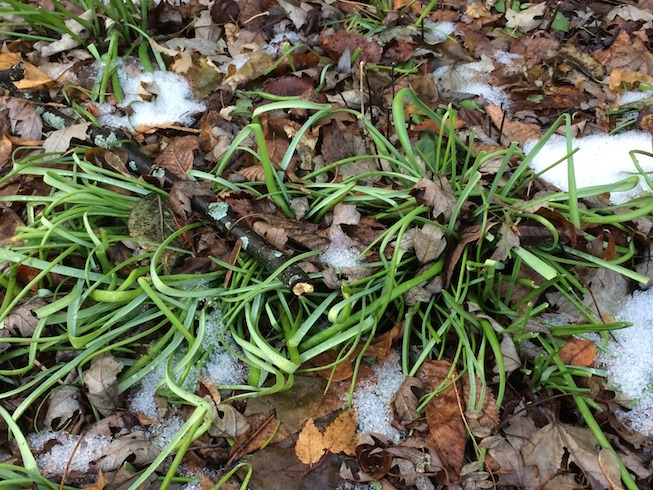We’ve got rabbits. Hungry, hungry rabbits. The blue fescue looks like a cartoon character with a disastrous haircut.

If you are wondering how I can be so sure of the culprits, look carefully in the lower lefthand corner of the photograph above. They left their single positive contribution to the garden—bunny poop does not burn plants the way chicken bedding will. I have also spotted at least one gangly rabbit at the bird feeder at night. This rabbit eats the safflower seed that the birds have dropped.
While I was wandering around looking at the damage and pondering what to do, I noticed that they are also, for the first time, eating grape hyacinths, but not everywhere.

The grape hyacinths that are mixed in with the Pennsylvania sedge and dead leaves under the silver maple don’t seem to be damaged.

What is the difference in these two spots? There are two that are obvious at this time of the year: leaves tucked in between clumps, and the aforementioned Pennsylvania sedge, which doesn’t show very well in this picture.
I have been reading a very interesting book, Garden Revolution: How Our Landscapes Can Be a Source of Environmental Change, by Larry Weaner and Thomas Christopher. In the chapter Setting Ecological Processes in Motion, they talk about another garden varmint—white-tailed deer. Weaner has noticed over the years that the meadows he planted were rarely damaged by deer. The deer do not seem to like to stick their noses into plants that they don’t like in order to get to plants they do like (p. 188–189). They definitely do not like Pennsylvania sedge, Weaner mentions. Hmmm.
It will be worth moving some Pennsylvania sedge into the bed by the house to see if it puts the rabbits off. Life is not that simple, though. Rabbits, I recall from school, have boom and bust years. I expect that we are reaching a bust in rabbit population around here fairly soon, but moving the sedge into the bed is still on my spring to-do list. It can’t hurt, and it might help.